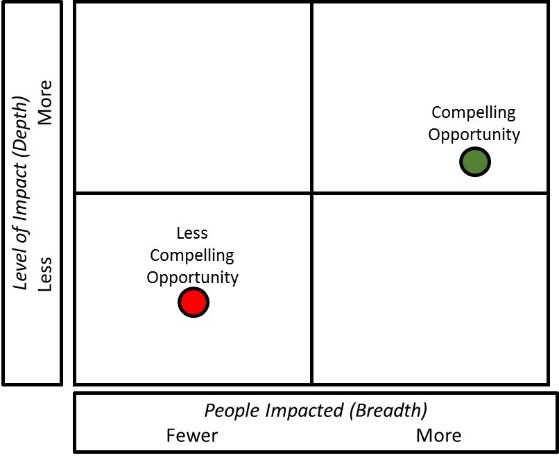A Board Member’s Take on Board Recruitment
Among the three cycles of board work, the Board Development Cycle is at once very important to the long-term health of an organization, yet also often overlooked or under-emphasized. More specifically, ongoing recruitment of new board members is critical to thriving boards, but is too rarely developed as an organizational core competence. In our work at BoardEffect and in serving on non-profit boards ourselves, we’ve noted that relatively few organizations are as intentional about board recruitment as they are about other parts of their business, like fundraising and program delivery. This post aims to offer some observations and simple tips to amplify board recruitment efforts.
To be fair, organizations that are more advanced in this area do tend to have collateral for distribution to prospective board members as part of the recruitment process. Too often, though, even these “marketing” materials focus exclusively on such mundane matters such as: (1) the basic responsibilities of board members, (2) an overview of the organization and its mission, and (3) its history and major milestones. While these are important pieces of information that warrant careful consideration by prospective board members, they are rarely enough to truly inspire a busy person to commit one’s precious time (and money) to serve on a board. Nevertheless, this can be easily remedied without the need to spend a lot of money on an expensive marketing campaign. This can be accomplished simply by appealing directly to what board members want their board experience to be:
Impactful
Overwhelmingly, people want to serve on boards of organizations that make a difference. This is hard for someone to assess simply from an organization’s “1-sheeter” that summarizes its business and mission (often in jargon-laden terms). As a board member, I want to know a couple of things. First, who exactly benefits from the work of this organization and how will its services positively impact their lives? Consciously or unconsciously, we tend to assess breadth and depth of the organization’s impact before jumping in. I personally think about it as a 2×2 grid (this is an incurable condition contracted in business school), as follows:
The second thing I want to know is the “proximity” board members have to the mission and constituents served by an organization. Is there direct exposure to the actual work and “clients” of an organization (for me, quite appealing), or is this a far-removed, intellectual exercise in governance (less attractive to me personally)? Whatever one’s stance on this issues, board members tend to have a strong preference one way or the other. Many organizations have great stories to tell on each of these fronts; and they would benefit from more actively sharing these with target board recruits.
Enriching
We all want a personally enriching board experience: one that provides context and perspective that help elevate how we perform in other aspects of our lives, while incurring as few pointless headaches as possible. Said another way, no one joins a board to attend boring meetings filled with self-centered grand-standing or political in-fighting. So, highlight how gratifying it is to be a part of your board! Brag a bit about how impressive and influential within the community your current members are; share stories of the benefit they have derived through exposure to their board peers. Give a sense for how high-functioning the group is, how well the meetings are run, and the type of stimulating opportunities and challenges the board addresses. If you don’t feel comfortable touting these, then there may be some more foundational work to do on these fundamental issues within the Board Meeting and Annual Board cycles.
Manageable
When approached with an invitation to serve on a board, a person first feels flattered. But that emotion is quickly replaced by a feeling of panic – “how on earth can I possibly manage the inevitable commitment with my hectic schedule?!” Help your recruits overcome that emotional hurdle by clarifying expectations and dispelling fears. Lay out the exact commitment, with specifics around meeting schedule (including dates / times / locations / roles / meeting norms), mandatory social events, or any other “can’t-miss” responsibilities. Then convey how the organization makes it simple to meet and even exceed those requirements. What does the organization do to assist with logistics, scheduling, RSVP-ing, and attendance? How are board materials distributed? What technology is used to simplify everything from the review of board information, to collaboration with fellow board members, to absentee voting and general engagement? These simple steps make it much easier for people to reconcile their participation and more likely for them to make the big commitment to join.
These are just a few of the steps we have seen work well for our clients and for ourselves. What other tips and tricks can you share with the community to help power your all-important board recruitment efforts? Also, be sure to check out our guide titled Building Your Board, which has ideas from experts on finding and recruiting the right members for your board.



